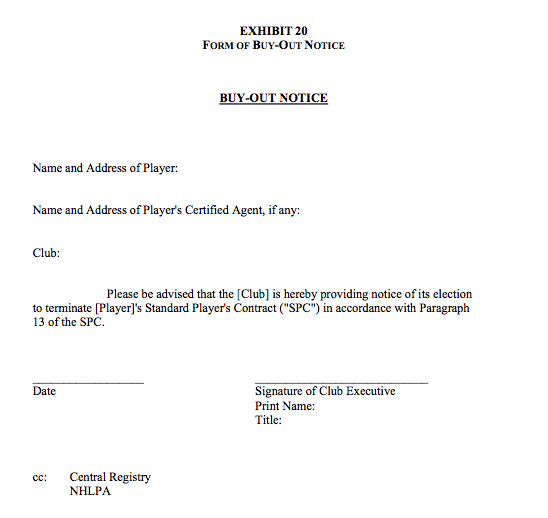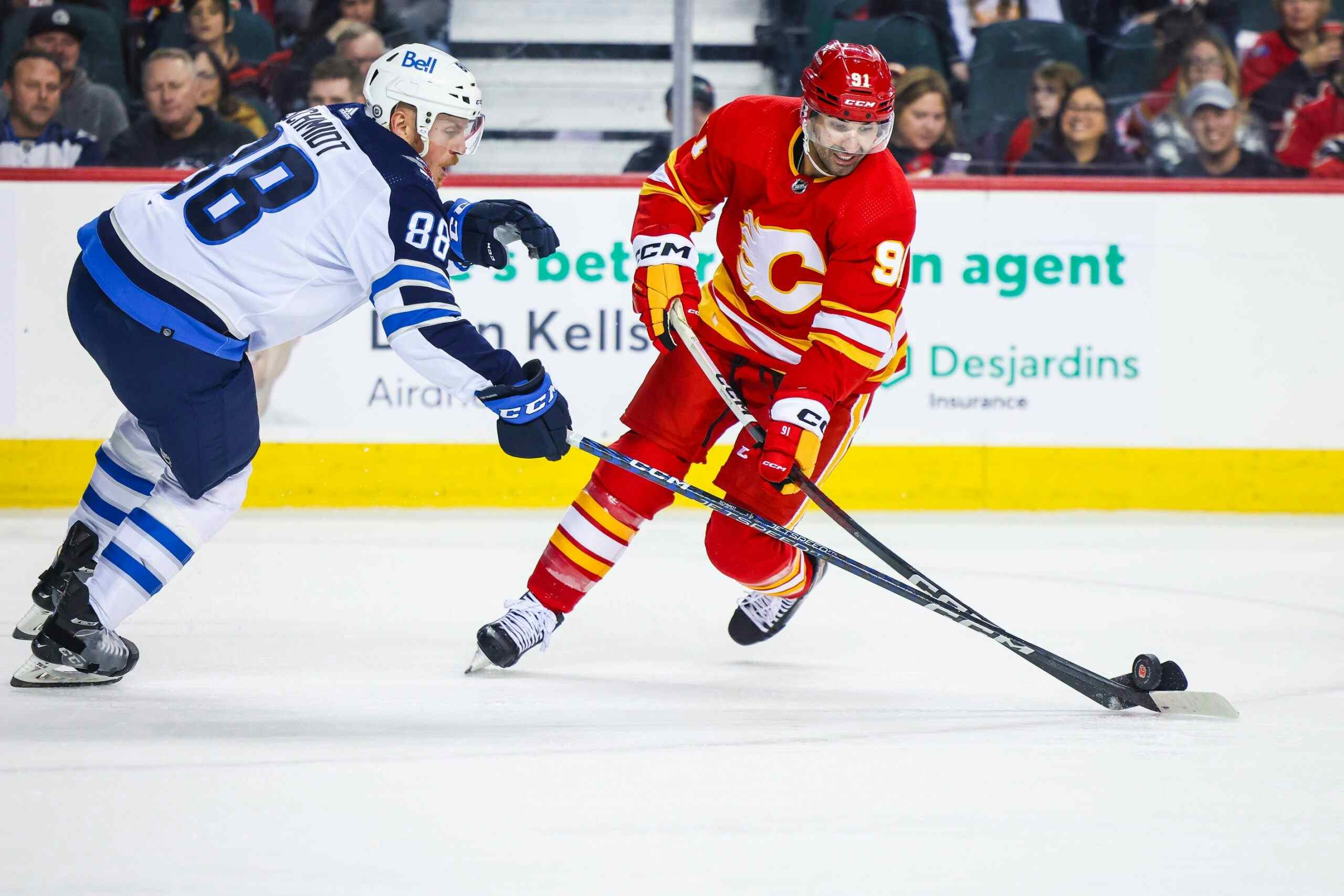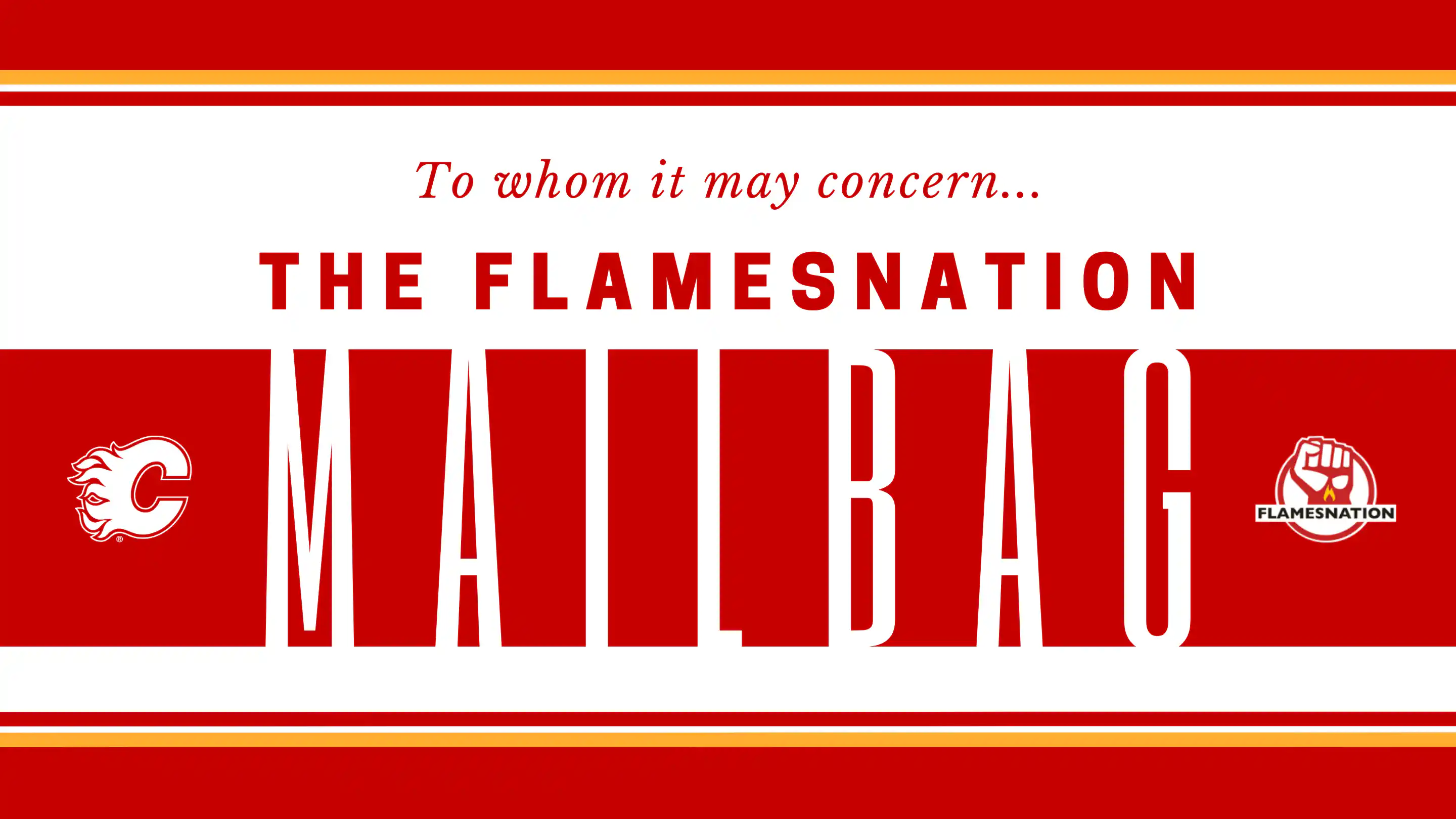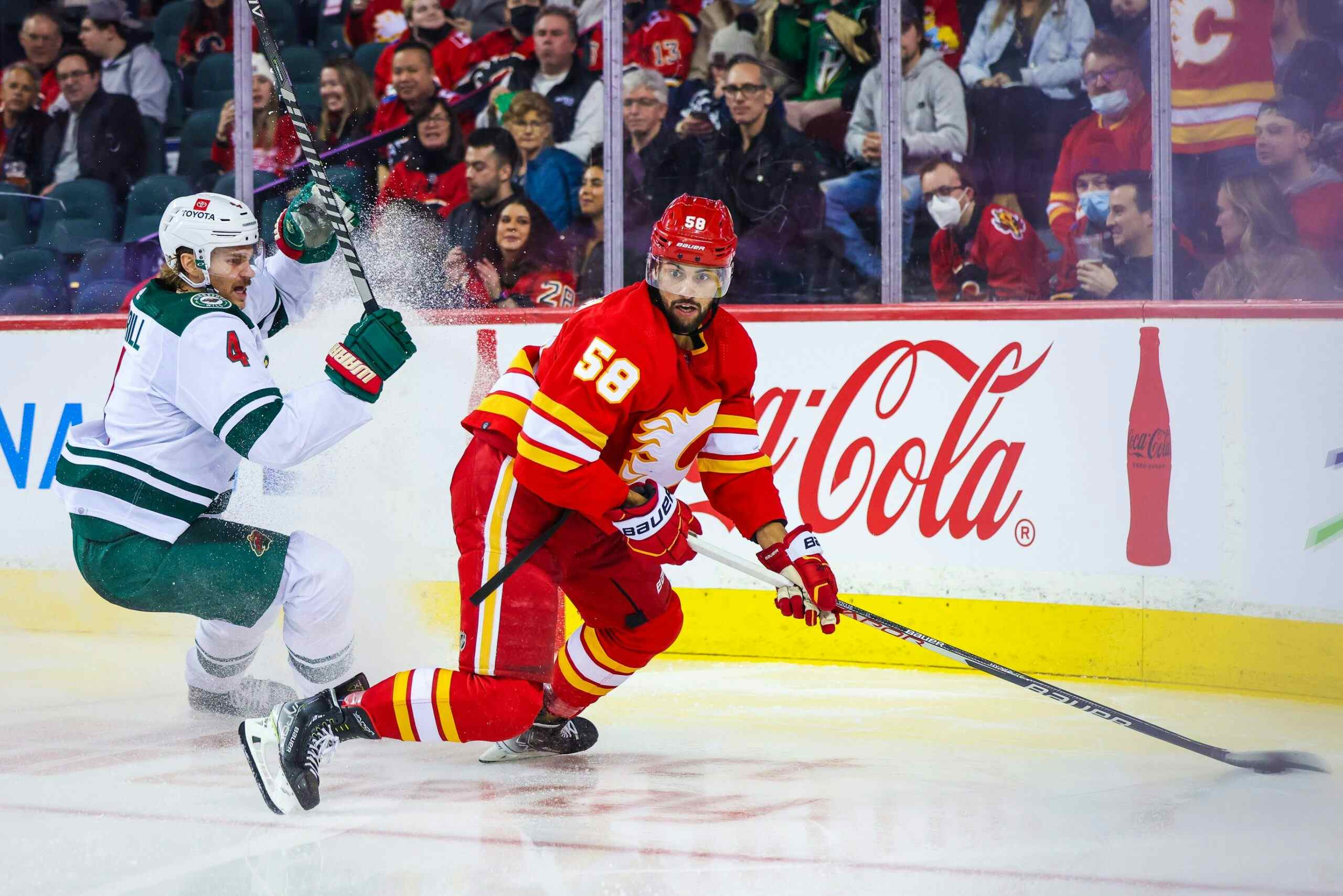What happened with the cap overage and the Shane O’Brien buyout?
By Ryan Pike
7 years agoThe smoke has cleared and we know a little bit more about the Calgary Flames’ 2016-17 cap situation than we knew a week ago. In short, it’s not great, and there are two contributing reasons as to why: entry-level performance bonuses and the reported news that Shane O’Brien’s June 30, 2014 buyout was an ordinary-course buyout (and not a compliance buyout) and thus counts against the cap.
Let’s take a look at the specifics in turn.
2015-16 Cap Spending
Last season, the Flames accumulated roughly $68,300,124 in salary cap spending according to Cap Friendly’s now-archived tracker. Their calculations are based on how many days a player spent on the Flames’ roster and a calculation of their daily cap value, and the level of detail provided in their table makes me fairly confident that their numbers are pretty close to accuracy.
With a $71,400,000 salary cap for last season, that accumulated cap spending would leave roughly $3,099,876 for performance bonuses to players on entry-level deals. (If the O’Brien buyout is on the books, that cap room for bonuses shrinks by $733,333 to $2,366,543.) Those bonuses are calculated following the season, as it gives the league time to pour through all the entry-level deals and calculate the bonuses owed.
(The previous version of this article incorrectly noted the cap was $70.4 million last year and there was a minor discrepancy with Cap Friendly’s numbers – our error – which has been updated/corrected.)
Performance Bonuses
Based on the reported cap overage of $630,500 and the cap room remaining, that means that the Flames had approximately $2,999,043 of performance bonuses owed to their entry-level players following the 2015-16 season.
Given their performances – they both played a ton and scored a ton – we can presume that Sean Monahan and Johnny Gaudreau each got their maximum of $850,000 of Schedule A bonuses, which are awarded for things like ice time, goals, assists, points, points-per-game and plus/minus. That alone drops the remaining bonuses for the five reported remaining players to $1,297,043. Gaudreau also likely received Schedule B bonuses for being top 10 in the NHL in overall scoring and points-per-game, though it’s unclear how much he would’ve made for those bonuses.
In addition, several entry-level players likely had games played bonuses in their deals – a carrot to dangle to incentivize a player to hit the NHL in their first three seasons. Entry-level players that spent time in the NHL last season include Sam Bennett, Jakub Nakladal, Markus Granlund*, Hunter Shinkaruk*, Oliver Kylington, Garnet Hathaway, Brett Kulak, Tyler Wotherspoon and Patrick Sieloff. Bennett also probably had an aggregate ice time Schedule A bonus, as he was top six on the team in cumulative ice time among forwards.
(* – In terms of Granlund and Shinkaruk, the Flames would probably be on the hook for any bonuses they achieved while a Flame. In other words: if Granlund had a bonus for a specific games played level that he hit while a Flame, they’d pay him for it.)
Long story short: the $1,297,043 is likely a combination of:
- Gaudreau’s Schedule B bonus for league-wide points and points-per-game rankings.
- Bennett’s Schedule A bonus for aggregate ice time.
- Games played bonuses for some combination of Bennett, Nakladal, Granlund, Shinkaruk, Kylington, Hathaway, Kulak, Wotherspoon and Sieloff.
The O’Brien Buyout
Here’s basically how buyouts work:
During a roughly two-week period between the end of the Stanley Cup Finals and June 30, teams can buy players out. If a player does not have a no-move clause, they get put on unconditional waivers and if they clear, their team buys them out and they become an unrestricted free agent. The player and their agent get served notice that they’re being bought out (see below, Exhibit 20 from the CBA), and the team files a form with the NHL’s Central Registry detailing the terms of the buyout (also below, Exhibit 21 from the CBA).


Now, compliance buyouts were brought in as part of the transition from the old CBA to the new CBA. Essentially, teams got two get-out-of-contract-jail-free cards. Compliance buyouts took place during the same period as the “regular” buyouts. As you can see, there’s nowhere on the forms to denote to the league office that a buyout is a regular or compliance buyout, so presumably teams had to call somebody or fax in a letter indicating such.
That brings us to the O’Brien situation. There’s no way that the Flames could’ve missed a deadline for O’Brien’s buyout that mistakenly turned it into a regular buyout because the buyout windows were the same (and the fact that the buyout got processed at all says they met the deadline). There are also no boxes to check off on these forms, so it’s not like they could’ve mistakenly filled out the form incorrectly.
Now, the salary cap for 2014-15 was $69 million and the floor was $51 million. All-told, the Flames ended up spending around $59.174 million on salaries in 2014-15, according to NHL Numbers. However, a good chunk of the salary that kept them over the cap floor was part of deals signed on July 1 in the free agent market: $4.5 million to Jonas Hiller, $2.917 million to Deryk Engelland and $3.15 million to Mason Raymond.
I’ve heard the argument that the Flames may have intentionally kept O’Brien’s buyout on the books because they had some concerns about being over the cap floor and preferred to keep O’Brien’s money on the books rather than be forced to go out and overspend on the free agent market. To that end, there were many stories around the draft that had the Flames really aggressively pursuing some bad deals from other teams, with the club reportedly offering to buy out the bad deals (so that other teams didn’t have to) in exchange for draft picks. These buyouts would have also presumably been insurance against having to go overspend in the free agent market.
The other, wackier, theory is that the Flames simply forgot to tell the NHL that they meant the O’Brien buyout to be a compliance buyout. But that theory is more in keeping with the type of mundane, clerical errors that seemingly can’t happen with buyouts, while the thought that the move may have been intentional at least presupposes there was a plan in place within Flames management at the time.
Recent articles from Ryan Pike





